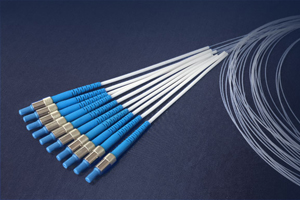Lasers in Skin Care Treatment
Keywords:lasers, fiber, medical, treatment, Time:30-10-2015• Hair removal
• Tattoo removal
• Treatment of vascular and pigmented cetaceous lesions
• Non-ablative rejuvenation
• Variety of medical conditions including but not limited to: (psoriasis, vitiligo, scars, stretch marks, acne, hypo pigmentation disorders
The Commission recognizes that it is within the scope of practice for the RN to provide laser therapy under the supervision of a laser trained and qualified physician {RCW18.79.260 (2)}. The use of lasers to treat or alter skin is the practice of medicine under {RCW 18.71.011}.
The medfibers provide full range of medical fibers, technique, and clinical application support as:Disposable Bare Fiber,Diffuser Fiber,Holmium Fiber, Polyimide Fiber,Side Fire Fiber...

The physician should provide appropriate supervision to allied health professionals. Allied health professionals include persons licensed, certified, or registered to practice a profession governed by {RCW 18.130.040}.
Supervision may require that the supervising physician be on site or it may require that the supervising physician be reasonably available in person to deal with complications. This will depend on the facility, the patient, the diagnosis, the person providing the treatment and the nature of the treatment being provided.
A Licensed Practical Nurse (LPN) can perform specific designated laser procedures which do not carry significant risks or that are not complex in nature based on the patient’s condition or the degree of hazard concerning the laser usage, risk factors, or treatment outcomes. The supervising physician is ultimately responsible
A standardized procedure is required for the RN/LPN to perform any laser treatment. This procedure should outline the role of the nurse under physician supervision in regards to patient assessment, implementation of a laser treatment plan with designated parameters, and evaluation of patient care.
Any nurse accepting the responsibility for these procedures must have appropriate education and supervised training to ensure competency in performing laser procedures. Laser training should include didactic and clinical aspects of: basic laser physics, laser safety protocols, OSHA and ANSI Z136.3 safety standards, laser-tissue interactions, laser operating procedures, potential hazards and complications, post-procedure education, and wound care.
The RN/LPN shall be responsible and accountable for the quality of nursing care provided to clients. This responsibility cannot be avoided by accepting orders or directions from another person.
This does not preclude Advanced Registered Nurse Practitioners (ARNP) from the use of lasers as permitted by their scope of practice.
Related Articles
- The clinical observation of semi-conductor laser treatment of hypersensitive dentine
- An Innovative Device for Fractional CO2 Laser Resurfacing:Medical fiber Application
- APPLICATION OF Nd–YAG LASER TREATMENT FOR ORAL LEUKOPLAKIA
- Pulsed Nd:YAG Laser Treatment for Failing Dental Implants Due to Peri-implantitis
- Laser Fibers Application in Periodontics
- Global Industry Analysis on Medical Laser Technology Market, 2015 to 2021
- Topical Gel Application and Low Level Laser Therapy on Related Soft Tissue Traumatic Aphthous Ulcers
- Disposable bare fiber in oral and facial practice
- Laser Treatment for Failing Dental Implants
- Lasers for Dental
